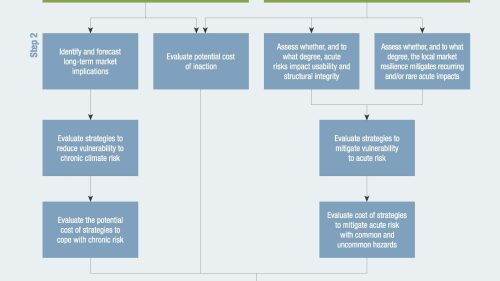Addressing the lack of affordable housing for the middle class is one of the biggest opportunities—and sources of frustration—for homebuilders, according to a panel of industry executives speaking during the 2018 ULI Fall Meeting in Boston.
The question put to the panel by moderator Adam Ducker, managing director of RCLCO, was, “Why are we missing this opportunity?”
A shift is taking place, as builders look for new ways to address the “missing middle,” panelists said.
“We definitely see national homebuilders focusing on this,” said Laura Cole, vice president of marketing for Florida-based LWR Communities. But builders “need to change the building model to deliver that product,” including new home designs, marketing, and branding techniques, Cole said.
Investors also are seeking ways to enter the market, said Martin Ditto, chief executive of Ditto Development, a five-year-old company specializing in co-living home designs.
“Capital is smart,” Ditto said. “They know there is a problem.”
Everyone is familiar with the challenges. Skyrocketing land prices and consistently rising construction and labor costs push builders to target the top end of the market, where they can find stronger profit margins.
Even defining the “middle” can be difficult, Ducker noted. Typically, it refers to people making $35,000 to $100,000, which means homes priced below $300,000, he said. “Shocker: We’re not building much of that in the United States,” Ducker said.
In 2002, 40 percent of the new housing was affordable by 50 percent of the population; today only about 20 percent addresses the middle class, Ducker said. The story for rental is not “radically different,” he noted.
Middle-class housing is “simply not an opportunity that the industry has figured out how to respond to in a significant way,” Ducker said.
But there are success stories. Austin, Texas–based Milestone Community Builders specifically targets single mothers, empty nesters, and other groups priced out of the traditional market, said Edjuan Bailey, vice president of branding for Milestone.
That also means developing marketing and finance options to help them buy, he said. They also focused on areas such as south Austin and east Austin that were “not cool yet,” he said, allowing them to hit price points below $200,000. “If you know the market, you can design for them,” Bailey said.
Milestone recently developed a project in Austin where units started at 800 square feet (74 sq m). “We knew who the customer was,” Bailey said. “We started at the low $400,000s and met the market demand.”
LWR Communities sees mid-level buyers as an important part of the mix, Cole said.
“We want to be there,” Cole said. “We know as soon as we introduce price points under $300,000, it sells really well.”
In addition to market share, a mix of different price points “makes for a better community,” she said. “We see families moving together” into communities, she said. The company wants an “ecosystem to support different life stages.
“We know the demand is there,” Cole said. “We also think it will make for a better community.”
The design of a master-planned community can help, Cole said. Focusing communities around community centers, walkability, and shared amenities can help lower the per-home costs and satisfy buyers’ needs for extras.
“That’s where we feel we add value,” Cole said.
Many homebuilders offer a wide array of expensive amenities that may not be important to buyers, Ditto said. “They are giving [buyers] options, but the options are terrible,” Ditto said.
Ditto focuses spending on design and branding, he said. “We’re spending a lot of time on architecture,” he said. “Architecture costs more, but doesn’t increase construction costs.”
Ditto brands around a desire to create community and homes for people looking for a different lifestyle. “We scream our beliefs from the mountaintop,” Ditto said.
Milestone also is focusing more on design and lifestyle these days, especially connecting people to the outdoors with courtyards and rooftop decks, Bailey said. “That’s what people are willing to spend money on,” he said.





